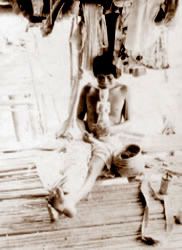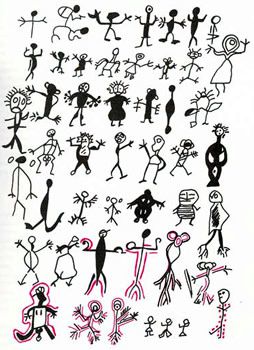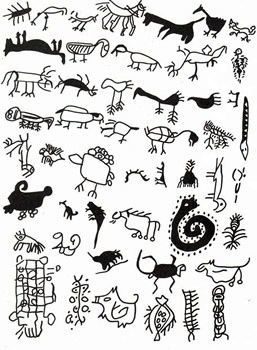Jaibanism is the religion of the Embera.
Contents
ToggleJaïbanism
The Emberá consider Dachizeze (Tatzitzetze, also known as Ankore), as the primordial being, masculine/feminine, creator of all the elements and of the first beings.
In Jaibanism, it spawned Caragabi who gave birth to the Emberá and their world, ordering the cosmos and giving them access to water, fire and food.
trutruca, was the owner of Armorcura (underworld), according to some versions it was also created by Dachizeze, according to other people he did not give him existence, and in this sense he was similar to Dachizeze.
The Emberá Universe of Jaibanism is composed of three main levels:
1. The world of Caragabi. Some call it the World of Blue Things. He houses Dachizeze, Caragabi, a series of primordial beings and the souls of the dead.
2. Armorcura. World governed by Trutruica, below the human, in him live the jai (essences, spirits).
3. The world of man, who lives in constant confrontation with jai and primordial beings.
In the beginning, the relationship between the human world and that of Caragabi was good, men could access it by a ladder, but when they did not respect the taboos, the possibility of visiting the upper world was broken. Therefore, only the jaibanas (shamans) can access the essential levels.
The I have of the world trutruca are agents of disease and aggression, but also of healing and protection. From I have are the " owners » of each animal species, that the jaibaná invoke to allow their abundance or to drive them away.
From I have the most important stand out:
Antumía : Jai malin, the equivalent of the devil. Also considered the spirit of water.
Pakore : Mother of the mountain, she guards the hunts.
Nusi: Giant fish.
The Jaibana
Interaction with spirits I have is the responsibility of jaibaná, who continue the work of Caragabi. The relationships of jaibaná with the I have guarantee the fundamental activities of society and the continuity of natural cycles, while establishing the territoriality of communities. The jaibanas can penetrate into the essence of all things present in the universe, establish communication with them and make them their allies in healing or attacking.
Jaibana can be male or female, unremarkable. He begins his apprenticeship from childhood, guided by a master, a jaibaná wise and powerful. Much of his teaching is transmitted to him by the appearance of the master in his dreams, allowing him to see beyond the limits of time and distance. In their communication with Jet, they know the healing properties of plants.
the jaibaná organizes a series of ceremonies aimed at communicating with the I have. These are performed at night and must include the following items of ritual paraphernalia: intoxicating drinks for the I have ; wooden sticks, healing carvings, leaves, totumas, face and body paintings. the jaibaná the officiates sit on wooden benches usually carved with the figure of an animal.

jaibaná
Healing scene in Rio Chico, Darien. The jaibaná rubs a cane over the patient's body
The healing ceremony is called " the song of jai“. the jaibaná, seated on his bench, holding his canes in his left hand and holding a palm leaf in his right, begins to sing, as he will do rhythmically and steadily all night long, until he has finished his task. He will ask the owners I have illness, at his command and under his control, to withdraw the I have disease and relieve the sick. In the end, the jet leave with the I have who causes harm, who is now under the control of the jaibana.
They also heal the houses, the land for sowing and harvesting, the river and the jungle when resources are scarce. Their power extends to natural phenomena, producing rain, lightning, thunder, storms and floods and even earthquakes.
Among their most significant rites, the navel " is practiced on children in the full moon, a few days after birth, by applying different substances to their stomachs. It is said that with this ritual, children acquire the strength to hunt, fish and navigate. They celebrate the baptism of children, the initiation of adolescents and the harvest.

healing doll
Emberá sick with a doll that represents a healing spirit. Azusa, Darien.
Representations of the jai, according to the jaibaná of northwest Antioquia

Anthropomorphs. The figures with double red lines represent powerful spirits, those with circles or dots represent jai disguised as snakes.

Zoomorphs. The representation of the fauna is not very different from that of the animal-shaped jai.
Fieldwork by Sergio Carmona, published in “ Perception and graphic representation of the Emberá world of northeast Antioquia“, Seduca 1988.